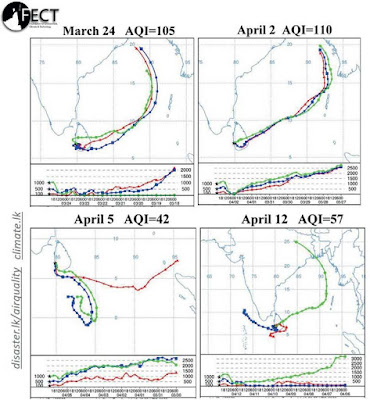A shipload of coal finds its way into sea
By Rathindra Kuruwita
More than 67,000 tonnes of coal find their way into the ocean annually and this is equal to one ship load, the Coalition Against Coal (CAC) says.
"Of this amount, about 17,000 tonnes are lost due to spillage during unloading from ship to barge. It is common for coal pieces to reach beaches in areas such as Kalpitiya," CAC said in a report titled Norochcholai Coal Power Plant – A summary of Social and Environmental Issues.
It is estimated that another 50,000 tonnes are blown into the ocean and the nearby villages due to strong winds in the region. Currently, the South African coal purchased by CEB has a very large amount of dust particles and it is estimated that coal piles in Norochcholai has over 35% dust (particles less than 2mm).
Maithri Gunaratne, former Chairman of Lanka Coal, said that a significant amount of coal was lost during barging and due to strong winds. "We import around 2.3 million tonnes of coal annually and we lose considerable amounts during barging and due to winds. The loss to winds has actually increased in recent times as we have started importing lower quality coal. I can’t confirm whether that the loss is 67,000 tonnes. But I can assure that the loss is significant."
Executive Director of CaFFE, Keerthi Tennakoon said that attempts to address the issue had been thwarted by senior Ministry officials for reasons better known to them. "There were proposals to make the unloading process more efficient and to cover the Coal yard. But these were stopped by officials who still control the Ministry of Power."
A spokesperson for CAC said that the data had been obtained from an Auditor’s General’s Report in 2015 and that audit reports were not available post 2015. He added that the losses were now higher since the CEB purchased South African coal, which had higher concentrations of dust. "The scale at the unloading belt seems to be always broken," he said.
The report adds that the area in which coal is stored was extended in 2017/18 and is closer to the nearby village. The coal yard can store 1.3 million tonnes of coal. "At present coal yard is 360m x 450m area, and coal is stacked up to 16m high. It is noted that there is no provision in the coal yard to prevent leachate, liquid that drains or ‘leaches’ from a landfill, of coal dust to ground water from the sides of the yard, especially the side facing the village. This leachate will add toxicity to the groundwater."
President of the Ceylon Electricity Board Engineers Union (CEBEU), Saumya Kumarawadu denied these allegations. He said they had fulfilled all environmental regulations. "We have taken all necessary precautions. Mostly these allegations are leveled by NGOs. There is a lot of clamouring about the plant’s environmental protection licence (EPL) having expired, but what happened was that a NGO filed a case and the renewal of the licence has been delayed until the court goes through our evidence."


Comments
Post a Comment